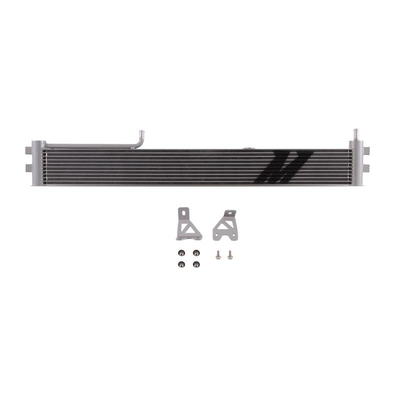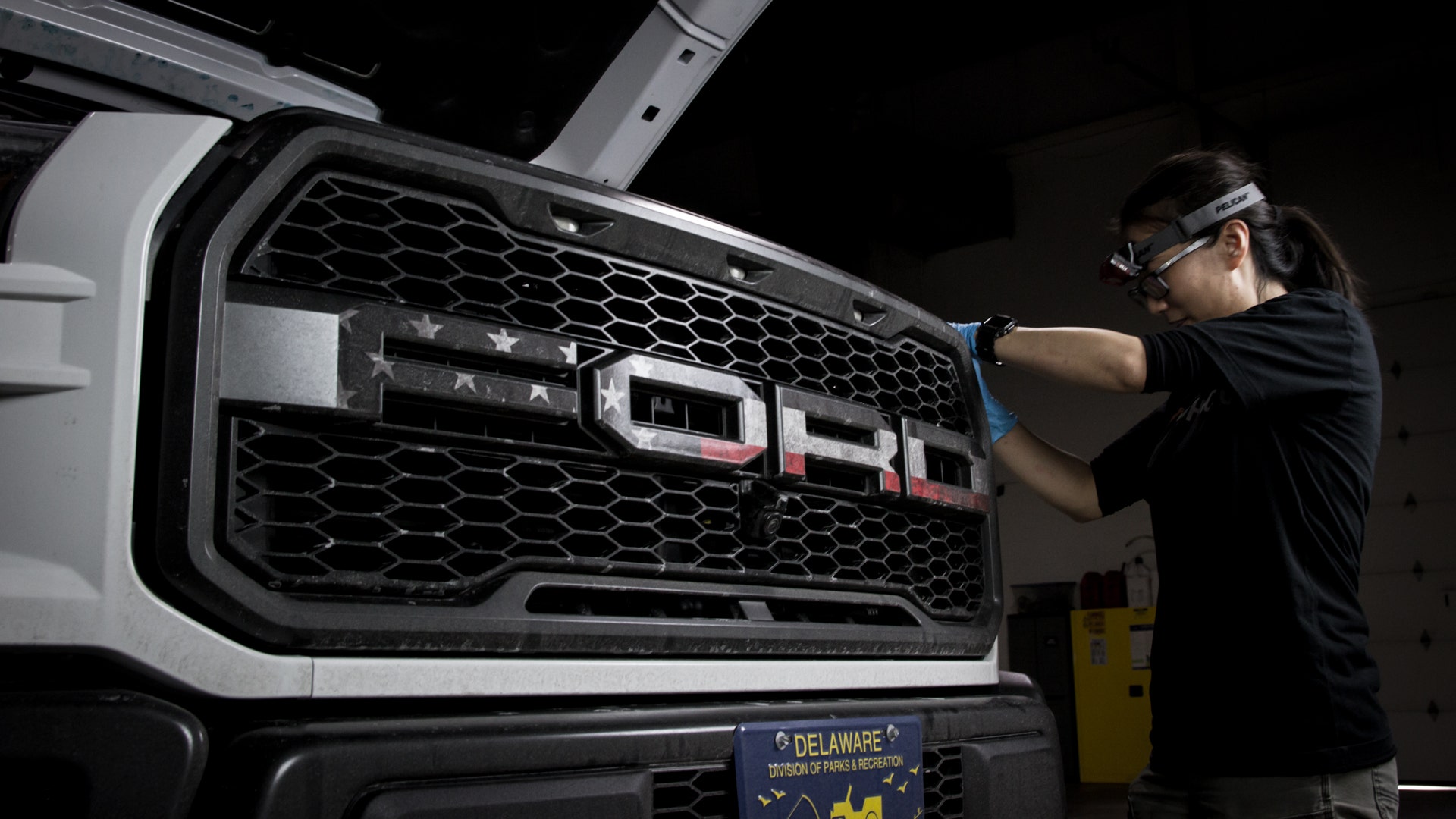
Carry the Weight - Transmission Cooler R&D, Part 3: Production
The time had come to put our engineer's hard work to the test, a bench test to be specific. The bench test determines if our final transmission cooler will be a stacked-plate or tube-and-fin design. Given the fact that our cooler is over double the size of the stock cooler, we're confident that either construction will cool better, but the devil is in the details. Aside from the cooling performance of each construction method, we needed to consider the pressure drop across each. The cooling performance of the stacked-plate cooler might be better than a tube-and-fin cooler, but if the pressure drop is too high, it will all be for nothing. To settle the debate once and for all we set up our bench-test rig and got to work.
You may be wondering why we're bench testing the coolers instead of road testing them. Road testing coolers is great for getting real world data when you can perform it on a closed course without traffic and with perfectly consistent weather. But, since we don't have access to a closed course for testing and we're no good at controlling the weather, we've opted for bench testing. Our bench test is designed to give us an apples-to-apples comparison between all three coolers. We can control the ambient air temperature in our shop, the airflow through the cooler with our dyno fan, and maintain a consistent fluid temperature and pressure. All that data can then be easily collected by our AEM AQ1 data-logger without having to worry about other parts of the vehicle's cooling system interfering.
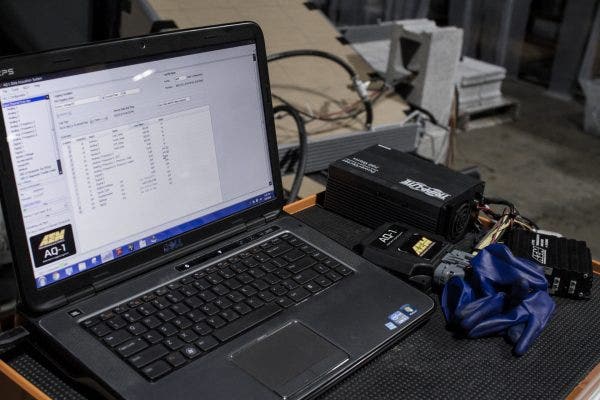
This testing eliminates any of the outside variables that we can't control with road testing, and while the absolute numbers may not be what you see on the vehicle, the comparison between each of the coolers will hold true. We started this test process on our 2nd Gen and 3rd Gen Ram Cummins transmission coolers and continued it with our Duramax transmission coolers. Each of those coolers showed great potential on the bench test and performed just as well on our customers' trucks.
We started testing with the stock cooler to give us a baseline to compare our coolers to, and then moved on to our larger stacked-plate and tube-and-fin coolers.
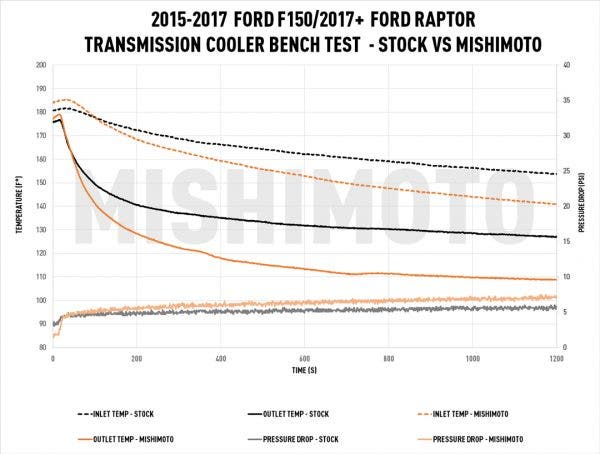
Both our stacked-plate cooler and our tube-and-fin cooler significantly out-cooled the stock stacked-plate unit. Our tube-and-fin cooler dropped fluid temperatures by 30°F across the core and reduced inlet temperatures by 15° F compared to the stock cooler. However, our fears of high pressure drops were also confirmed. Our 105% larger stacked-plate cooler had a significantly higher pressure drop than both the stock cooler and our tube-and-fin cooler. We anticipated a higher pressure drop with the stacked-plate cooler due to the internal structure of the tubes, but the added length meant the drop was just too high to run safely. So it was decided, our cooler would be a tube-and-fin construction.
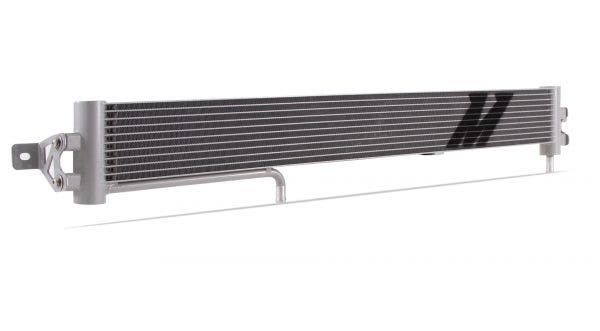
With performance testing out of the way and our cooler construction chosen, we could move on to fitment testing. At the beginning of this project, we targeted this cooler to fit the 2015-2017 F-150. As the project progressed, we learned that the cooler may also fit the 2017+ Raptor. Luckily, we were already working with a 2018 Raptor on our radiator development and we brought it in to do a test fit. Our engineer, Ye, carefully removed the grille of our volunteer Raptor and quickly swapped the stock cooler for our massive replacement.
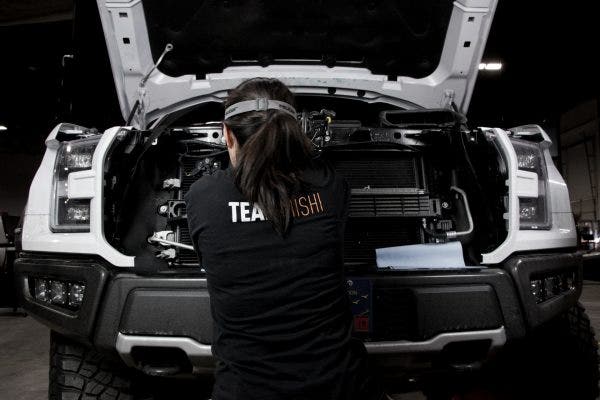
Removing the stock cooler was a simple matter of popping the hoses off and unbolting the plastic transmission cooler mount. Installing our cooler was equally as easy. Ye bolted the adapter mounts onto our cooler, fixed it to the truck, and clamped the stock hoses back on. All was done in less than an hour.
Thanks to Ye's meticulous measuring, our cooler fit like a glove. Compared to the feeble stock transmission cooler, our cooler certainly looks more capable of carrying the weight of the mighty Raptor's reputation. While we were sorting out the fitment, we also took the time to see what it would take to fit our cooler onto a truck without the factory auxiliary cooler. For most trucks, adding our cooler will just require swapping a few sets of hoses. To see if your truck can be converted, check out this handy guide.
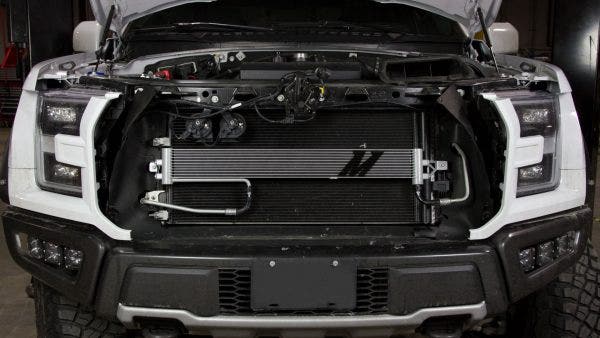
With that our R&D was complete. Our cooler outperforms the stock unit and fits like it came from the factory. The only thing left to do is get it on your truck. Luckily, this cooler is also now on discounted pre-sale. Check it out on our website and, as always, let us know what you think!
Thanks for reading,
-Steve





